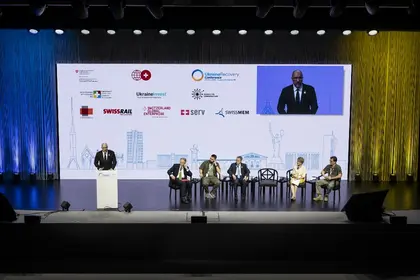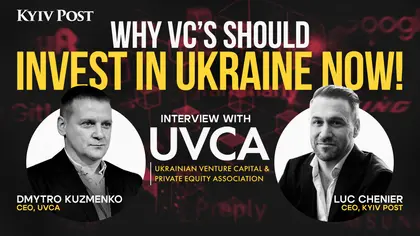The Ukrainian Recovery Conference (URC) 2023, held in London on June 21-22, came and went. A lot of speeches were said, a lot of statements made, a lot of panel discussions conducted. Pictures were posted all over social media, and quotes from the conference popped up in the press. All in all, the expected buzz.
Yet, what tangible things came out of the London conference? Things, that will meaningfully impact Ukraine now and in future? Things that it makes sense to watch for?
JOIN US ON TELEGRAM
Follow our coverage of the war on the @Kyivpost_official.
Actually, we did. Not much, but what we got is quite valuable.
First, there was the general vibe of the conference, where there was clear evidence of support for Ukraine from international partners. And we’re not talking just Western governments, but the international business community too.
This is not major news for those who’ve been actively engaged in talking to that business community for a while – interest in Ukraine is crystal clear since last year – but it is a necessary precursor for getting anything done in terms of the reconstruction of Ukraine. Without interest and support from international business, the chances of success would be zero. Fortunately, that is not the case.
Second, we got at least some clarity on the use of frozen Russian assets to help Ukraine recover. The European Commission has unveiled a plan to use the returns that these assets generate as a source of funding for assistance to Ukraine, rather than confiscating the assets outright. This lowers the amount of funding that could be made available per year by at least an order of magnitude (though across several years or even a decade the difference is less pronounced). Still, this is a clear message that allows all the stakeholders to make their own plans. So, positive as well.

Ukraine Spent Nearly $2.5 Billion for ‘eRecovery’ Program, But It’s Not Yet Enough
Up to $60 billion of new short and medium-term financial commitments have been made by partners at the conference, which is quite good, but within expectations. Ukraine is not financially self-sustainable as long as the war is ongoing, and then time is needed for reconstruction to kick-in successfully before the country can stand on its own financial feet. The partners have quite clearly communicated their commitment to supporting Ukraine until the end, which means a certain level of financial support can be expected for the time being.
What’s more interesting is the relative shift in the volume of these commitments towards the EU, particularly in the medium-term. Out of the pledged $60 billion, about $50 has been pledged by the EU, as part of a new initiative called the Ukraine Facility (the “Facility”). In parallel, the European Commission has published a detailed proposal to the European Parliament and Council, describing this new initiative.
The Facility is expected to consist of three pillars. One of them is a massive program of financial support in exchange for structural reforms and strategic investments, intended to bring Ukraine closer to the standards of development of EU states. The second is the system of financial guarantees intended to de-risk and support private sector investment into Ukraine. The third is technical assistance on various levels and to both government and non-government actors.
If the Facility gets the necessary support and is then skillfully established in practice, it could become the main development program for Ukraine, with a clear target of bringing Ukraine reasonably close to readiness to join the EU at the Facility’s expiration in 2027 (the currently envisaged expiration date). Such a shift towards EU-supported and EU-integration-oriented development strategy would make a lot of sense for Ukraine, given the fact that EU accession is anyway the first clearly identifiable development goal the country has.
Whether the Facility will indeed make this happen remains to be seen – first it has to be politically supported within the EU (the easier part), then it has to be successfully implemented and brought to life (the really hard part).
Finally, the URC brought greater focus on the private sector, though for now in a very superficial form. It seems that everyone now clearly understands that the reconstruction of Ukraine will simply not fly without major private sector participation (finally!). Yet specifics are mostly lacking.
The concept of a Ukraine Development Fund was floated at the conference, but at this point it generates more questions than answers. The Ukraine Business Compact has been signed by a lot of companies, both international and Ukrainian, yet what value it will have apart from purely symbolic is also not yet clear. Nevertheless, the simple fact that the primary role of the private sector in the reconstruction of Ukraine has been recognized and accepted by most stakeholders is something to be applauded.
Ultimately, it seems that, after London, we are pointing in the right direction as far as the reconstruction of Ukraine goes. Now it’s a question of actually moving in that direction.
The views expressed are the author’s and not necessarily of Kyiv Post.
You can also highlight the text and press Ctrl + Enter






